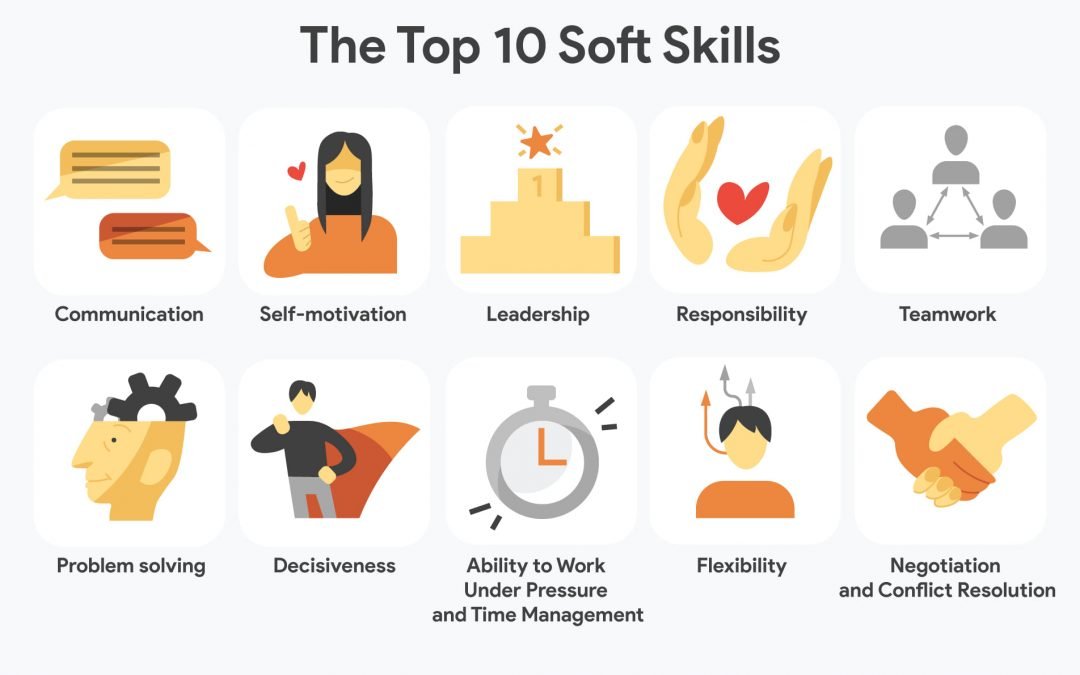
by admin | May 30, 2022 | Uncategorized
Should You Cheat On Your Exercises?
We all always hear the same story about how you should always use proper form, full range of motion and a slow to moderate pace, in your exercises. This is because oftentimes, we see people in the gym just yanking the weights, applying too much inertial force and using just a little of their muscles.
Nevertheless, this is sort of a “complete cheating” while on the other hand, strategic cheating can actually help you in your workout.
Why You Should NOT Cheat (Completely)
Complete cheating generally involves an excessive amount of inertial forces, accompanied by poor biomechanical positions. Such positions, done under the resistance of weight, can lead to long-term injuries of your joints, ligaments, tendons, and sometimes, even a muscle rupture can occur.
For this reason, you should mainly resort to the above-mentioned proper exercise execution, followed along with full range of motion and constant tension.
How Can I Strategically Cheat, Then?

Contrary to the current popular approach that dictates “staying a couple of repetitions shy of failure”, back in the golden days when the likes of Arnold Schwarzenegger trained, people looked for ways to always surpass failure. For this reason, many weight training techniques came to life, to up the intensity during heavy sets.
One of those techniques, that doesn’t involve a partner or a spotter, is the “cheating” technique.
The cheating technique basically implies using inertial forces to squeeze out another couple of repetitions AFTER you reach failure. In other words, cheating is done AFTER you’ve done the exercise right AND reached failure. Think of cheating as forced repetitions, where a spotter helps you get a couple more repetitions, after you can’t do any more unassisted.
Which Exercises Can I Cheat On?

Now, due to the twisty nature of cheating, you have to be very careful on the exercises you choose to cheat on. Some movements cannot be cheated on with a proper technique, which increases the chance of injury. As a matter of fact, there are only a handful of compound exercises which you can use to safely take yourself beyond failure.
Those are namely:
#1 Bicep Curls
Whether you are doing dumbbell or barbell bicep curls, or even hammer curls, you can easily lean forward slightly and use some inertial force. As a matter of fact, Arnold himself used this technique to train his biceps, which was dubbed one of the best bicep peaks of all time!
#2 Lateral & Front Raises
Since the position of the dumbbells is almost identical with that of the bicep curls, lateral & front raises allow you to do the same thing – Lean forward slightly and come back up on the concentric part of the repetition. Looking to get some 3D delts that pop? Use this technique.
#3 Hanging Leg Raises
If you’ve done a solid number of strict hanging leg raises and want to squeeze out a couple of more after failure, simply, swing back and forth slightly more! Using the cheating technique on this exercise will lead to immense abdominal pump and ultimately, better definition and separation (if your nutrition is on point!).
How Often Should You Use This?
No matter how much control you have over this technique, it can still be dangerous and lead to injury, because you demand of the body more than it is currently capable of. For this reason, properly dosing this technique is important if you decide to use it in the first place.
Since there is no definitive answer to the frequency of use, try and use this technique for less than 10% of your sets, on days when you FEEL that you have extra power. Don’t do it just because you think you have to.
Conclusion
Because the muscles respond to the tension/resistance that the training loads create, full range of motion, proper exercise form and constant tension should be the main goals of a workout. Nevertheless, there are training sessions where you just have to take yourself further. This is exactly when you can apply the cheating technique on appropriate exercises.
If not, you can always use a spotter to help you squeeze out that extra bit of effort!

by admin | May 30, 2022 | Mind
Should You Train To Failure?
If you’ve watched the movie “Pumping Iron” you have probably seen the hardcore, peak intensity training that bodybuilders in the Golden Era went through. Some of those bodybuilders, like Serge Nubret, swore by the effectiveness of training to failure… On EVERY SET! And well, the truth is that for most of us, reaching failure on every working set will lead to burnout quite quickly.
This is why it is important to understand this concept and learn how to integrate it in your training regimen properly. So let’s dive straight into this and discuss training to failure, shall we?
The Intensity Factor

In sports science and weight training, intensity measures how close you get to your maximum strength capabilities. To put it simply, the heavier the weight you lift, the higher the intensity, meaning that technically, your one rep max (1RM) represents 100% intensity for you on a given exercise.
For example, if you can bench press 100 kg for one single rep, and fail to do a second rep unassisted, 100 kg is 100% intensity for you on the bench press.
Muscle Activation
One of the more important things to remember, is that the heavier you lift, the more fast-twitch muscle fibers are activated. Fast-twitch fibers are the stronger, more powerful muscle fibers, which can exert great amounts of force, explosively. However, fiber recruitment is the primary means of lifting heavier, only up until ~80% of your maximum strength capabilities (intensity).
Going above 85% and until failure is only possible with an increased frequency of brain to muscle signals.
What Does This Mean For Me?
With this information in mind, it is quite clear that training to failure is way more strenuous for the nervous system. Nevertheless, reaching muscular failure is quite the powerful stimulus as well, but due to its strenuous nature, it should be properly implemented into your routine.
Generally, you should test around muscle failure, by only taking 1 set for each muscle group to failure, per week and working up from there.
If you go overboard with failure, you will experience:
- Joint/ligament aches
- Prolonged muscle exhaustion
- Lowered strength capabilities
Monitor those and adjust the volume of failure sets in your training split accordingly!
Failure And Muscle Growth

Some of the legends like Arnold & Serge can sell you on the idea that reaching failure is ESSENTIAL. However, modern studies suggest that staying 2-5 repetitions shy of failure is more beneficial for muscle growth, than training to failure. Nevertheless, each and everyone reacts differently to certain stimuli, so your best bet is to, again, test around!
Take-Home Message
Carefully managing your training intensity will allow you to optimize your quality training volume in the long-term, thus creating a better stimulus and maximizing gains. Improper implementation of training to failure can prevent this from happening, due to its innate ability to, well, fry your nervous system!
This is why, your main means of creating greater stimulus, should be to increase training weight, number of repetitions and sets, and also, opening up better recovery windows between sets. Only when you have this covered, you should consider implementing sets to failure, in which case, you can start with just one set and see how far you can take it.
Train smart, not hard!

by admin | May 30, 2022 | General
Soft Skills & How To Improve Them
If you are looking to step up your personal development game, developing a set of soft skills may be even more important than your actual, technical skills. Soft skills are all the traits and characteristics that you develop through communication with peers or even on your work place. In this article, we’ll shed light on what soft skills actually are and what you can do to improve them.
What Are Soft Skills?

As we mentioned, soft skills are more related to your social dynamics, rather than the technical knowledge and skills that you have. That is to say that soft skills (also known as “core skills”) are the skills that enable you to master hardly controlled actions.
That includes but is not limited to:
- Public speaking
- Work ethic
- Leadership
- Problem solving
- Critical thinking
This set of skills is applicable to any endeavor and is essential to your personal development. To further help you understand exactly what this means, let’s have a look at the 3 most important soft skills to develop – Creativity, Adaptability, Communication.
Creativity
Creative thinking can be placed at the core of your skillset for ANY given position, because that is simply, the human factor. As technology advances, more and more robots start replacing work positions BUT they are not creative like humans are. Now, in this context, creativity doesn’t have to do with art for example, but is rather related to your ability to work with information.
In essence, creativity would be your ability to connect otherwise unrelated facts, which can massively boost your problem solving skills and can even help you create an innovation.
Adaptability
Contrary to the quite simple past, where you had just a pool of careers to choose from, the dynamic, modern-day world DEMANDS you to be adaptable. For this reason, being flexible and adaptable to change is of prime importance for your personal development skillset. On top of that, this would require you to always be open to learning new things, because this is the time when you often have to learn how to work with newly implemented changes, technologies and other conditions.
Learn more, do more diverse things and what you already know how to do, try to do differently!
Communication

Regardless of your job position or the career path you’re trying to follow, your social skills are a make or break factor. The truth is, whether you’re working for someone, or on your own business, you will ALWAYS have colleagues, clients, managers, etc. Besides being able to speak and write, learning social psychology is also a crucial skill for any job position.
This will allow you to understand each individual, without reacting emotionally and in the face of social conflict, you’d be firm on your feet and have the ability to bring everyone to consensus. In your quest to find common language with people that have different views, you learn how to speak your mind out in front of anyone.
Take-Home Message
Soft skills are an important part of your character development, as they can be used virtually in any position, career path or business. Though essential, creativity, adaptability and communication are just 3 of the many soft skills that are useful. You have to find the ones that are most relevant in your specific case, for your career, job, business or whatever it is that you are doing.
In developing those, you will be able to create a better work/social flow, making everything easy to adhere to and enjoy.

by admin | May 30, 2022 | General
Soft Skills VS Hard Skills – What’s the Difference?
Soft and hard skills are two of the most crucial elements, whether you are applying to a job, or are looking to partner up with someone for the successful realization of your business idea. Both of these are essential for a sustainable work process, but what really are those skills and what is the difference between them?
Let’s Find Out!
Soft VS Hard Skills
The key differences between soft and hard skills is the means of acquiring and application throughout the work process.
Hard skills are mostly acquired through a methodical education or a specific training program. Having this means you are competent and more technical, whether it is about working with software, or working with machinery. In essence, hard skills are all your technical skills that concern a certain job position or business idea.
Soft skills on the other hand are more related to your personal characteristics and traits, which you have acquired through your life experience. For instance, some of the core soft skills include time management, communication, stress management, problem solving and critical thinking.
To put it simply – Hard skills can be defined as all the technical knowledge required for a certain position, while soft skills are universal behaviors and habits that can be applied to any position.
What Are The Most Important Soft Skills?

As we just mentioned, soft skills are your character traits and social behavior, which dictate how you work alone, or with a team. Though technical, hard skills are required in most job positions, soft skills allow you to create a sustainable and optimally functional working environment.
Here are some of the most important soft skills to adopt:
- Reliability
- Creativity
- Adaptivity
- Problem solving
- Openness to learning
- Effective communication
- Critical thinking
In learning those, you will undoubtedly create a more positive relationship with your work place or business environment
What About Hard Skills?

Now, for the most part, hard skills are more specific, as different positions require different technical knowledge. However, for the most part, there are a couple of core hard skills that are applicable in most places.
Those are namely:
- App development
- Statistics
- Fluency in several languages
- Content creation
In acquiring those, as well as the ones your specific position requires, you make it far more likely to create a seamless workflow with zero to no mistakes.
Do I Really Need Any Of That?
This question often comes to mind, but the answer is very simple… You don’t NEED anything, when there is no context. Considering however, that we live in a dynamic world, acquiring more and new technical skills and character traits is important when it comes to putting out the greatest value possible.
Needless to say, that value given out, will result in benefits flowing in, whether that is a raise from your boss at work, or a successful realization of a business idea. Work on yourself, learn more, do more!

by admin | May 30, 2022 | General
SPRING BREAK OR SPRING BREAK UP ?
What do we need to embrace and what are we letting go?
Spring is almost here, and summer is just around the corner. It is a period of transition in many respects and a time to readapt in others. I name it The Good, The Bad, and The Ugly. But don’t take me as a pessimist; I’m just a reality whisperer explaining the spring rites of passage that occur every year when we de-layer our life to summer mode, in more ways than one… so here we go.
The Good:

Great weather is on the way, the plants are reviving, and the animals are waking up to retake their summer territory. People emerge from their winter slumber and examine their life during this renewal period, an ambition of thinking in search of the good, bad, and ugly realisations of their lives. They examine their current position and brainstorm solutions to enhance their lives.
After all, it is spring, and nothing is more lovely, though some argue that Autumn is more beautiful. To each their own, but I like to wear fewer layers rather than bundle up in restricting layers of clothing! After experiencing the joys of spring, now comes…
The Bad:

Let’s face it, most of us acquired a little more padding to get through the harsh winter days, or we had a few extra pounds from the holidays. But no more concealing it behind layers of clothing. You may well be the one with the cuddly coat on the beach. For the rest of us it’s time to figure out how to reduce weight and flatten our stomachs.
To start the fat burning going, we need to devise a strategy that you can stick to. For the purpose of devoting time to the gym. If you, like me, despise the restrictions of a gym, it’s time to discover a home training regimen and stick to it. Invest in a fitness plan to help you combine a healthy diet with specific activities, or maybe you prefer a video series that will help you burn calories.
It is not tough to lose those pounds; all it needs is the will and discipline to get started. And, sure, the six-pack abs may be regained, as can the belly “muffin” fat. Invest in yourself by finding a program that can kickstart your fat-burning processes. A plan is a worthwhile investment in your future and wellness. It might assist or counteract the unfortunate reality that spring brings to many individuals this time of year…
The Ugly:
For some, the changing season raises concerns about their relationships. The human drive to discover what else is out there strangely leads to unexpected spring breakups.
Maybe it’s the end of the school year, and couples are thinking about the perceived difficulties of being geographically separated for the summer. Or it’s the graduation breakup when the man or lady begins to have doubts about the relationship’s ability to withstand the transfer to the “real world.”
Others may be experiencing cascade troubles due to the winter’s cabin fever, leading them to wonder what else is out there. There will always be a suffering partner who doesn’t understand why, regardless of the situation.
And Maybe you’re correct, and the breakup was a mistake.
This problem will make or break their summer for these individuals. It is time to seek outside relationship counsel to help you navigate a second shot at reuniting with your ex. A third party or a written guide takes you to solutions to difficult problems such as, “Can I get my ex back?” If that’s the case, what’s the best method to go about it? More importantly, what activities should you avoid that permanently damage the relationship? Should you just let it go and move on?
Friends and relatives might be comforting, but they often provide the worst counsel. You need a source who does not have a pre-existing view, positive or negative, on the ex. Look for a reputable provider that has assisted thousands of couples. The human race has endured and healed from breakups that made life seem unbearably difficult. Don’t squander your chances or your time. Work on a method to reclaim them or move on!
Yes, spring offers a slew of new challenges. The good news is that they are readily surmountable. There will be cleansing in many ways, maybe fixing, renewal , maybe acceptance to let of things, jobs, situations and even people. Be kind to yourself but also be open minded.
So come on, let’s get started and make this summer greater than the previous ones. Starting this Spring.






















